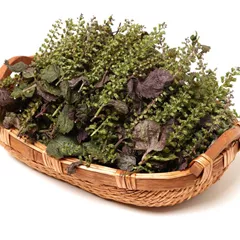Phlegm clogging the Lungs with Qi Stagnation
The information provided here is not a replacement for a doctor. You shouldn't use it for the purpose of self-diagnosing or self-medicating but rather so you can have a more informed discussion with a professional TCM practitioner.
At a glance
Preliminary reading: What is a pattern?
Diagnosis
Common symptoms: Poor appetite Digestive difficulties Focal distention of the chest Coughing and wheezing with copious sputum
Pulse type(s): Slippery (Hua)
Tongue coating: Thick white coating
Treatment
Common formulas: San Zi Yang Qin Tang
Pathology
Phlegm clogging the Lungs with Qi Stagnation is a pattern of disharmony in Chinese Medicine.
Chinese Medicine views the human body as a complex system that tends toward harmony. A pattern of disharmony is a disorder that prevents that harmony from occurring.
Patterns give rise to symptoms that may at first glance seem unrelated from a Western standpoint but that actually make a lot of sense when one understands Chinese Medicine theory. For instance here Phlegm clogging the Lungs with Qi Stagnation gives rise to such diverse symptoms as coughing and wheezing with copious sputum, focal distention of the chest, poor appetite and digestive difficulties.
To diagnose a pattern, analyzing a patient's pulse as well as their tongue is common practice. In the case of Phlegm clogging the Lungs with Qi Stagnation patients tend to exhibit slippery (Hua) pulses as well as a tongue with thick white coating.
Patterns aren't exactly the Chinese Medicine equivalent to Western diseases, they're rather the underlying causes behind diseases or health conditions. Here Phlegm clogging the Lungs with Qi Stagnation is thought to sometimes induce conditions such as chronic bronchitis, emphysema or bronchial asthma (as well as two others).
Diagnosing Phlegm clogging the Lungs with Qi Stagnation
Diagnosing a pattern in Chinese Medicine is no easy feat and should be left to professional practitioners. In particular one has to know how to differentiate between different types of pulses and tongue coatings, shapes and colors as well as learn to read from a long list of seemingly unrelated symptoms.
Pulse type(s): Slippery (Hua)
Tongue coating: Thick white coating
Main symptoms: Poor appetite Digestive difficulties Focal distention of the chest Coughing and wheezing with copious sputum
Treating Phlegm clogging the Lungs with Qi Stagnation
Herbal formulas used to treat Phlegm clogging the Lungs with Qi Stagnation



The top herbs in San Zi Yang Qin Tang are White Mustard Seeds (Bai Jie Zi), Perilla Seeds (Zi Su Zi) and Radish Seeds (Lai Fu Zi)
San Zi Yang Qin Tang
Source date: 1856 AD
Number of ingredients: 3 herbs
Key actions: Directs the Qi downward. Transforms Phlegm. Reduces harbored food.
Formula summary
San Zi Yang Qin Tang is a 3-ingredient Chinese Medicine formula. Invented in 1856 AD, it belongs to the category of formulas that warm and transform Phlegm-Cold.
Besides Phlegm clogging the Lungs with Qi Stagnation, San Zi Yang Qin Tang is also used to treat Cold-Phlegm in the Lungs or Cold-Phlegm.
Related conditions
Please keep in mind that a Western Medicine condition can be caused by several Chinese Medicine patterns of disharmony and vice versa. As such a patient suffering from one of the conditions below will not necessarily be suffering from Phlegm clogging the Lungs with Qi Stagnation, it is just one pattern that's commonly associated with the condition. Click on a condition to learn what other patterns it's associated with.
Chronic bronchitis Emphysema Bronchial asthma Pediatric asthma Spasms of the diaphragm
